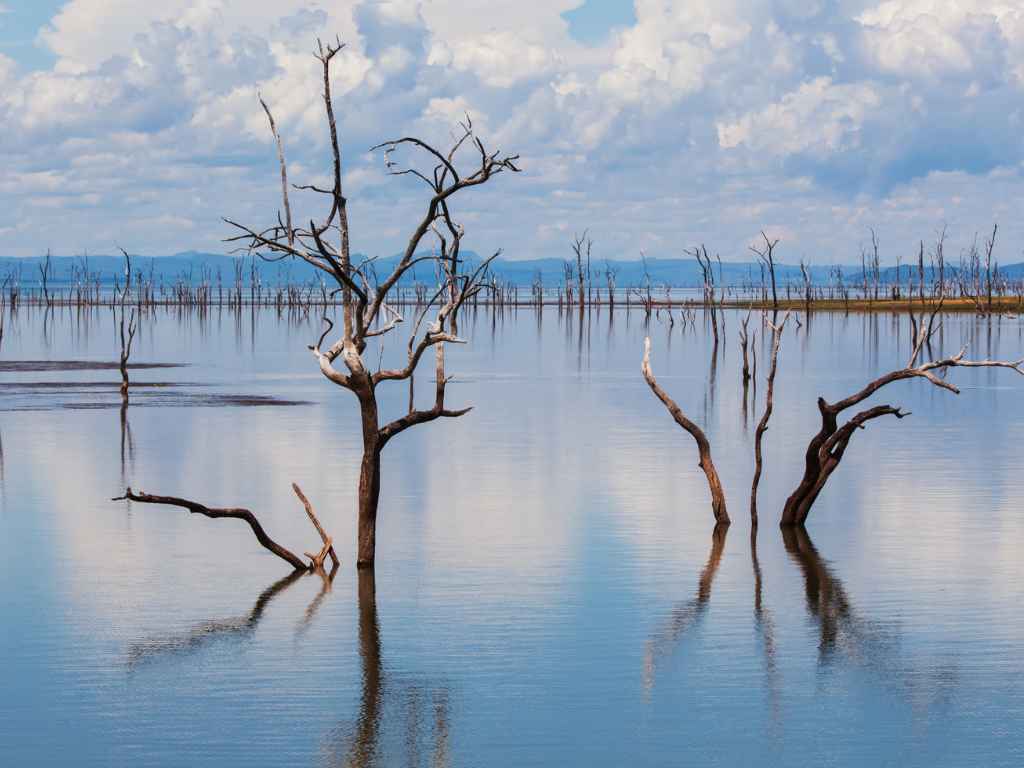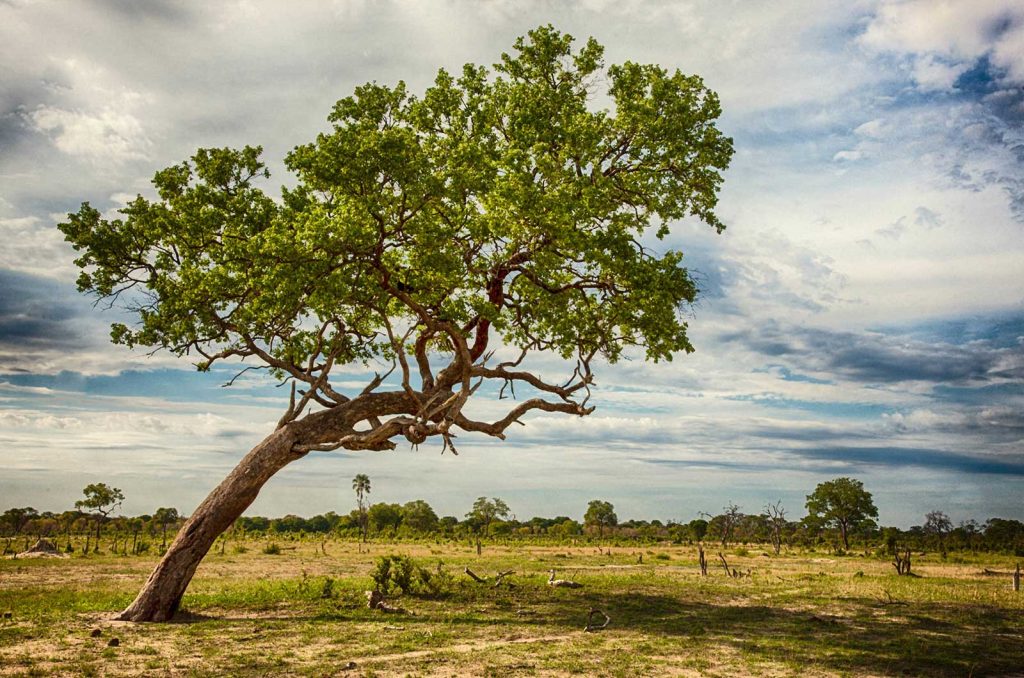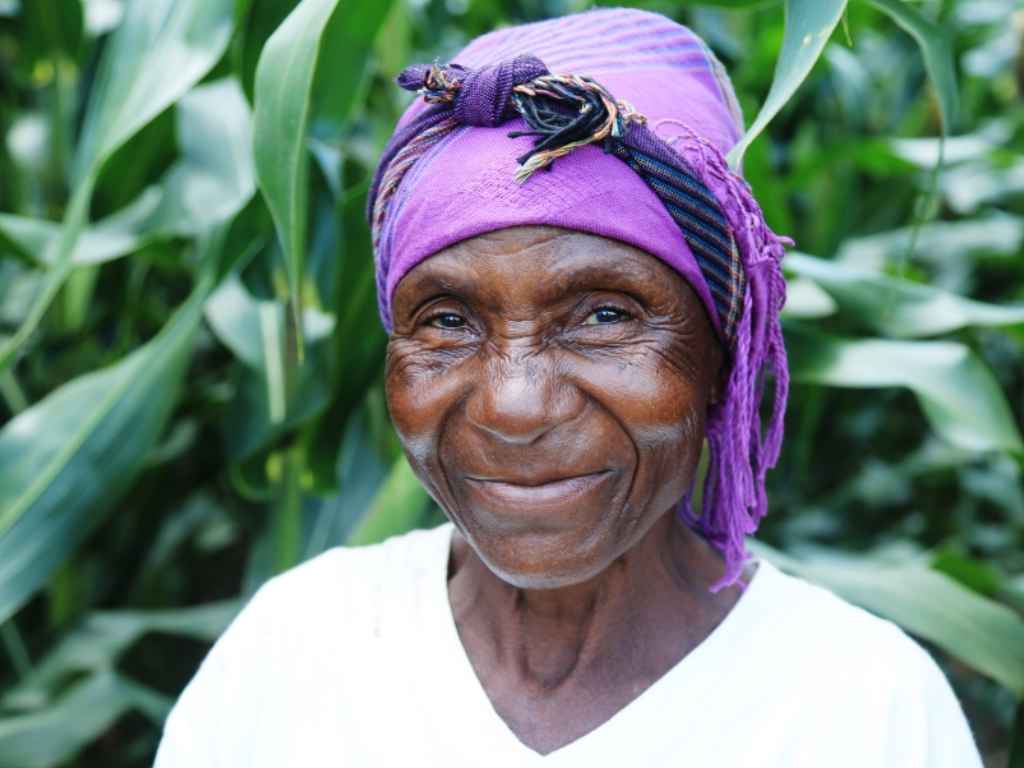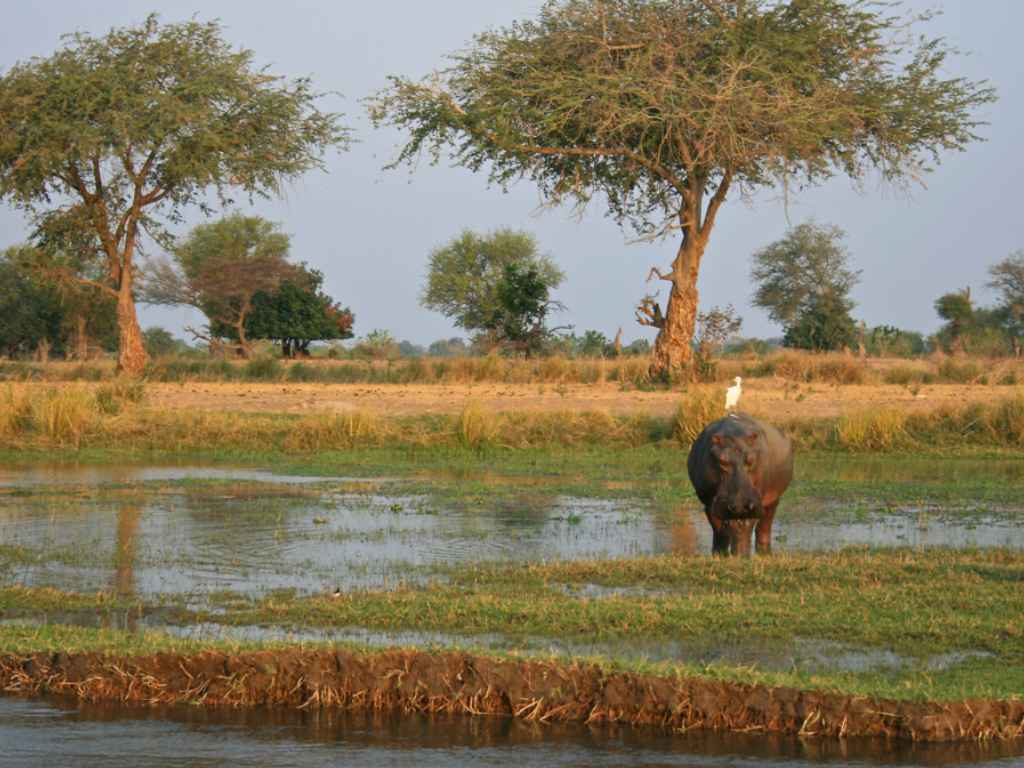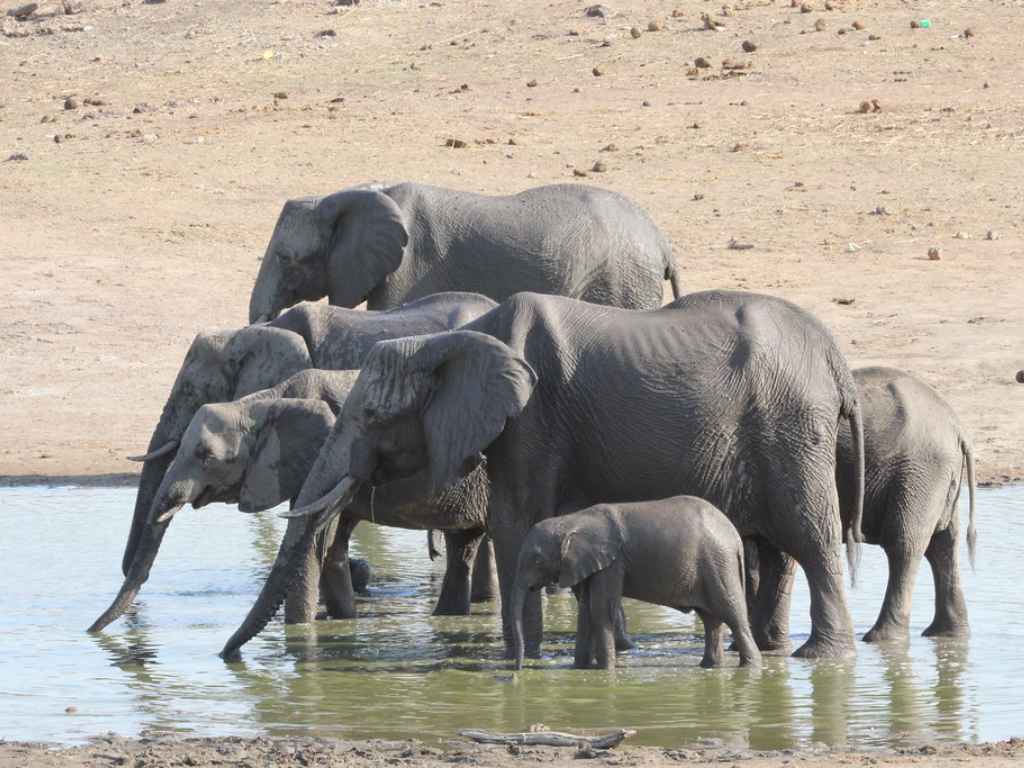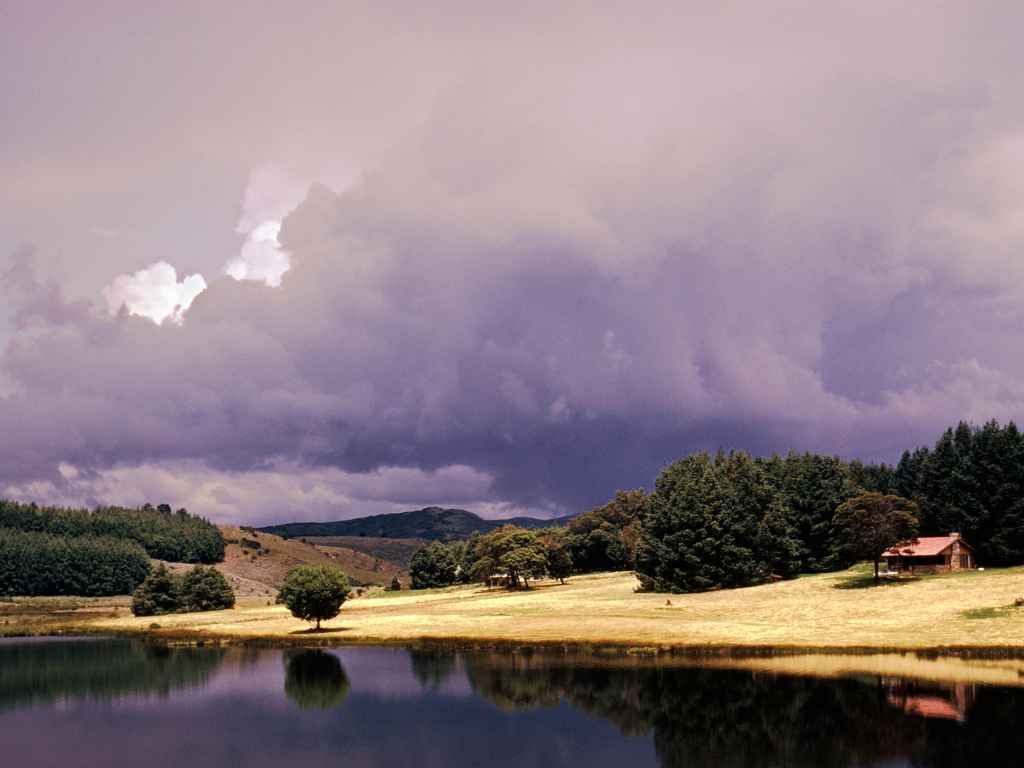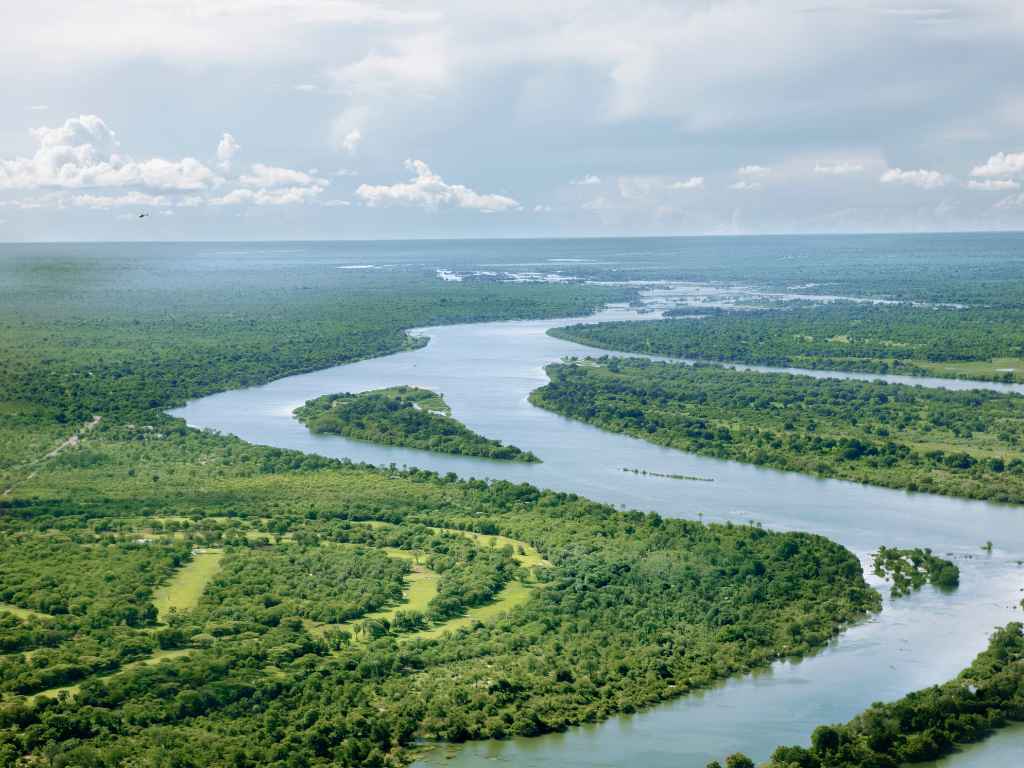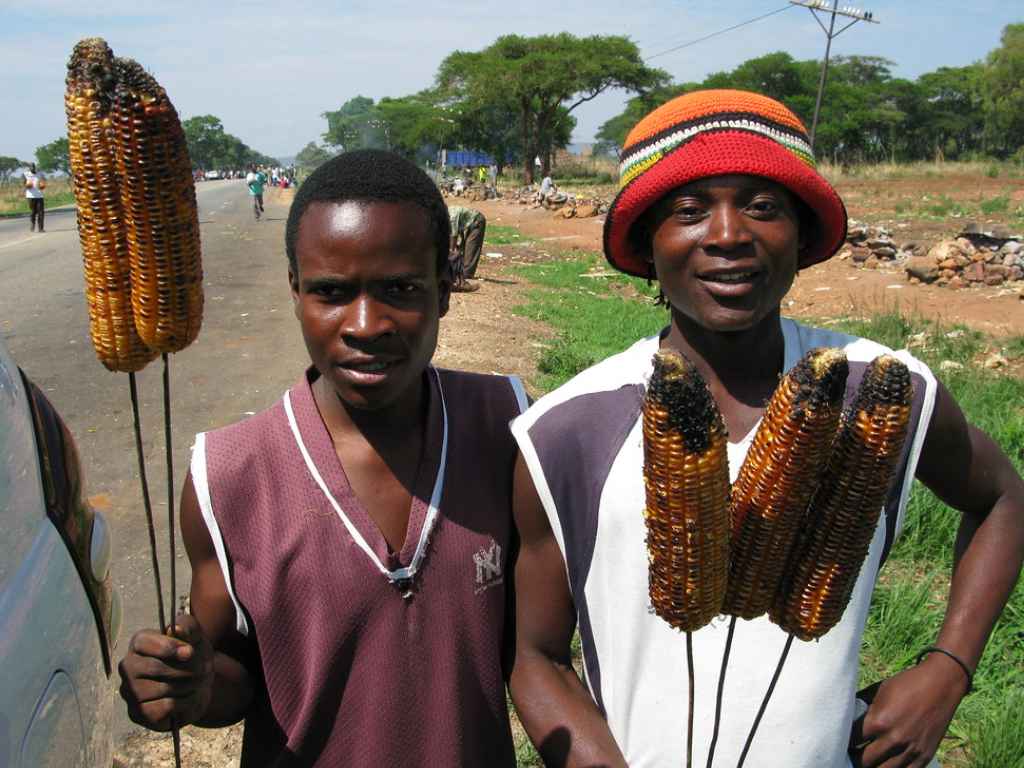Nestled between Zambia and Zimbabwe, Lake Kariba is a tranquil gem that’s often overlooked. It’s not just a body of water; it’s a life source, an ecosystem, and a hub of activity. This man-made marvel, created in the late 1950s, is a testament to human ingenuity and nature’s resilience.
From its inception to its current status as one of Africa’s largest artificial lakes, Lake Kariba has a fascinating history. As we delve into its story, you’ll discover how it’s become an integral part of the region’s culture, economy, and biodiversity.
So, let’s embark on a journey to explore Lake Kariba, its captivating history, and the unique features that make it a must-visit destination. Brace yourself for a voyage of discovery that’s as enchanting as the lake itself.
Introduction
Overview of Lake Kariba
Lake Kariba stands as a testament to the capability of man’s resourcefulness. Born in the late 1950s, Lake Kariba carved its place into the world as one of Africa’s largest artificial lakes. Not confined to being a realm for water dwellers, it has grown to become a life source, an ecosystem, and a bustling activity center, making vital contributions to the region’s culture, economy, and biodiversity.
Location and Geography
Lake Kariba straddles the borders of Zambia and Zimbabwe. Its geographical makeup alternates between expanse and confinement, reaching a staggering 5,400 square kilometers in surface area, while maintaining longitude and latitude coordinates of approximately 28.8E and 16.5S respectively. A unique feature of its geography is its snake-like elongated shape, extending up to 223 kilometers in length but only averaging 40 kilometers in width. Witnesses to, and participants in, this aquatic spectacle are multiple species that confer upon Lake Kariba its unique profile and reputation. This geographic distinctness makes Lake Kariba a must-visit location, not merely for its enchanting nature, but as a tribute to the fusion of man-made ingenuity and nature’s infinite expressiveness.
The Kariba Dam and Reservoir
Situated on the mighty Zambezi River, the Kariba Dam forms an integral part of Lake Kariba. From its history and construction to the reservoir’s unique features and statistics, it undoubtedly contributes significantly to the environmental impact of the region.
This video brings to life the story of the dam.
History and Construction
Construction of the Kariba Dam began in 1955, aiming to harness the Zambezi River’s energy to generate electricity for Zambia and Zimbabwe. Visionary industrialists had devised a four-year plan to construct the Kariba Dam and Reservoir, which became operational in 1959. The dam stands as an astonishing feat of engineering, measuring 128 meters in height and 617 meters in length. Despite facing numerous challenges, such as displacing over 57,000 local Tonga people, its construction marked a milestone in hydroelectric power generation.
Unique Features and Statistics
Deeper than a 20-story building at its deepest point, the Kariba Dam dominates the landscape, holding back an astounding 180 billion cubic meters of water. That’s greater than the volume of 72 million Olympic-sized swimming pools! As one of the world’s largest man-made reservoirs, the lake measures approximately 220 kilometers long and 40 kilometers at its widest point, covering an incredible 5500 square kilometers. It disseminates hydroelectric power to both Zambia and Zimbabwe, accounting for about 70% and 85%, respectively, of their total electricity generation.
Environmental Impact
The formation of the Kariba Dam also prompted significant changes in the region’s environment. The inherent disruption to the natural flow of the Zambezi River, as well as the massive reservoir’s formation, led to modifications in local weather patterns and ecosystem transformations. It gave rise to entirely new habitats for a variety of aquatic species, thus promoting biodiversity. However, these transformations weren’t without their downsides. Severe disruption to local communities, flooding of valuable lands, and the extinction of specific animal species underline the complexity of balancing human need with environmental preservation.
Natural Wonders and Landscapes
Lake Kariba isn’t just a marvel of engineering; it’s a spectacle of nature, boasting stunning landscapes and diverse ecosystems.
Shoreline and Islands
Lake Kariba stretches over an impressive 224 kilometers, featuring a strikingly irregular shoreline. This long shoreline, reminiscent of a dragon’s tail, houses an array of islands. The largest of these – Chete Island, Fothergill, and Spurwing – provide picturesque settings that both visitors and local wildlife flock to. These islands, replete with lush vegetation and exotic fauna, exist as independent ecosystems within the larger lake.
Unique Ecosystems and Wildlife
Lake Kariba’s unique ecosystems make it a haven for wildlife. From elephants meandering on the shoreline, to crocodiles lurking in shallow waters, to majestic fish eagles soaring above the lake – Lake Kariba teems with life. The vast terrestrial and aquatic ecosystems support diverse species of birds, mammals, reptiles, and fish. Notably, the lake has a high population of tigerfish, making it a popular spot for anglers.
Sunrises and Sunsets
Lake Kariba serves up a visual feast with its sunrises and sunsets. These daily spectacles paint the sky with vivid hues of orange, purple, and red, reflecting beautifully on the expansive water surface. In particular, the ‘Kariba Sunset’ is renowned worldwide, often dubbed as one of the most stunningly beautiful sunsets a person can witness. Each dawn and dusk provides a dramatic light show that continues to charm tourists and locals alike.
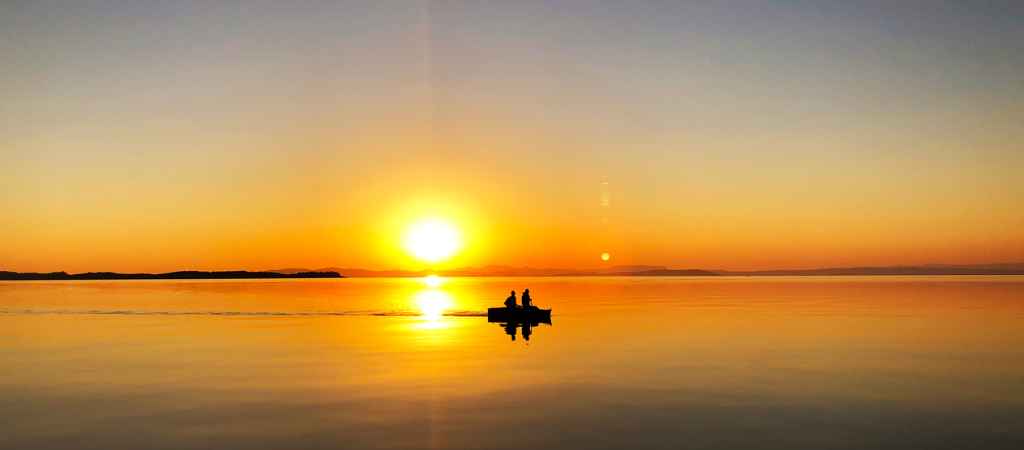
Outdoor Adventures and Activities
The allure of Lake Kariba extends beyond its natural sightings and into a plethora of outdoor adventures and activities waiting to be explored.
Boat Cruises and Safaris
Encounter the marvel of Lake Kariba close quarters via boat cruises and safaris. Sailing on the lake presents an opportunity for an intimate look at the indigenous populations, if zebra and hippos on islands like Chete and Fothergill catch your attention. Sunset cruises, on the other hand, guarantee a mesmerizing view of the flaming sky as it blends with the shimmering waters, a sight unsurpassed in its tranquility.
Fishing and Angling
The sheer variety of fish in Lake Kariba lures anglers from afar. The lake claims the nickname Tiger Fish Capital of the World, illustrating its popularity among fishing enthusiasts. Here, anglers can grapple with the challenge of reeling in a fierce, nimble tiger fish, among numerous other native species.
Watersports (Swimming, Kayaking, etc.)
From a relaxing swim to the thrill of kayaking, water sports enthusiasts find Lake Kariba a haven. The calm waters of the lake provide ideal conditions for swimming, while adventurers can embark on a venture, paddling their way past aquatic vegetation and observing nearby wildlife.
Birdwatching and Wildlife Viewing
Lake Kariba’s diverse wildlife makes it a prime spot for birdwatching and wildlife viewing. From the iconic fish eagle to groves filled with elephants, an abundance of species occupy the ecosystem surrounding the lake. Birdwatchers can spot over 350 different bird species, adding the cherry on top to an already fulfilling excursion.
Accommodation Options
Lake Kariba features a variety of accommodation options to cater to a wide range of visitor needs.
Lodges and Resorts
Numerous lodges and resorts around Lake Kariba offer luxurious comfort and stunning views of the water. These properties often provide a fusion of modern amenities and traditional architecture. For instance, Bumi Hills Safari Lodge extends panoramic lake views, intimate bush dinners, and a tranquil spa facility. Likewise, Hornbill Lodge presents thatched rondavels equipped with en suite bathrooms and private balconies overlooking the lake.

Houseboats and Floating Hotels
Houseboats and floating hotels symbolize a unique accommodation style at Lake Kariba. These floating residences provide an immersive, serene experience on the water, allowing guests to view spectacular wildlife from the comfort of their rooms. Take Kariba Houseboats as an example, where guests enjoy fully furnished cabins, professional crew services, and opportunities for fishing and game viewing from the boat.
Camping and Caravanning
For the ardent outdoor enthusiasts, camping and caravanning sites are abundant near Lake Kariba. This approach to accommodation allows closeness to nature and provides a distinct, unrivaled experience. Nyanyana Campsite, well-known for its shaded grounds and protected wildlife viewing platform, emphasizes basic yet comfortable facilities for campers.
Nearby Towns and Facilities
Proximity to the towns of Kariba and Siavonga brings the convenience of nearby facilities for guests staying around Lake Kariba. These towns offer supermarkets, restaurants, medical services, and even small airports for flights from Zambia and Harare. Thus, you’re never too far away from amenities while enjoying the tranquility of the lake.
Getting to Lake Kariba
After exploring the mesmerizing beauty and countless attractions of Lake Kariba, you’re likely eager to plan your trip. Multiple transportation options are available, making it quite accessible, depending upon personal preferences and budget.
By Air
Frequent fliers prefer air travel as the fastest route to Lake Kariba. Harare International Airport, Zimbabwe’s largest airport, sees flights from across the globe daily. From Harare, affordable local flights land at Kariba’s small yet functional airport within an hour. Both Harare and Kariba airports provide rental car services, for convenient road travel to the lake.
By Road
Alternatively, self-drive enthusiasts often take roads leading to Lake Kariba. From Harare, it’s a 370km journey, taking around 5 hours, encapsulating the raw beauty of Zimbabwe. Roads are generally well maintained, facilitating easy driving. Besides, public buses are also available from Harare and other major cities. Remember, petrol stations are sparse in rural parts, so keep your fuel tank full whenever possible.
Tour Packages
Tour packages are another way of taking the hassle out of travel planning. Numerous travel agencies offer holistic packages inclusive of transportation, accommodation, meals, and guided tours around Lake Kariba. Utilizing these packages allows more time to enjoy the marvels of Lake Kariba. Remember, before finalizing a package ensure it fits your preferred style of travel, budget, and safety measures related to the ongoing global health situation.
Best Times to Visit
Lake Kariba’s charisma transcends seasons, making it a year-round destination. Yet, certain periods offer optimally pleasant experiences. An understanding of seasonal variations, weather, and climate, as well as awareness about special events and festivals, can enhance your trip in a significant way.
Seasonal Variations
Lake Kariba experiences two primary seasons: the dry season from April to October and the wet season from November to March. Dry months promise excellent wildlife viewing, as animals congregate around water resources, making it easier to spot them. However, for fishing enthusiasts, the best times to visit coincide with the wet season, particularly from November to February, as it marks the height of the Tigerfish season.
Weather and Climate
The climate at Lake Kariba remains relatively warm throughout the year, with average temperatures ranging from 20°C to 30°C. Dry spells offer cooler nighttime temperatures, while the wet season averages warm, but rainfall is often short-lived and unlikely to impact your plans significantly. Carry lightweight, breathable clothing for the warm afternoons, and layer up in the cooler mornings and evenings. Strive to check the weather forecast before traveling.
Special Events and Festivals
Lake Kariba hosts some remarkable events, adding an exciting element to any visit. For example, the Kariba International Tiger Fish Tournament (KITFT), held in October, attracts fishing aficionados from across the globe. Additionally, the Lake Kariba Carnival during the New Year period is another notable celebration with a vibrant display of culture, live music, and fireworks, ensuring a memorable visit.
Practical Information
Given Lake Kariba’s irresistible charm, let’s explore key considerations to make your visit a breeze.
Entry Fees and Permits
Access cost for Lake Kariba isn’t fixed, given its public status; nevertheless, specific activities, like fishing or safaris, carry charges imposed by local authorities or tour operators. While fishing enthusiasts can expect to pay a license fee, appreciated by locals for conservation efforts, entering a national park for safaris also attracts entry costs. Carry enough local currency or ensure your credit card will suffice, as these fines often vary.
Safety and Security
Lake Kariba’s tranquility might project an idyllic paradise, but safety remains crucial. Maintain vigilance, especially in isolated spots or during nighttime. Crimes aren’t rampant, but instances like bag snatchers aren’t unheard of. Safaris demand attention too – adhere to your guide’s instructions and avoid provoking wildlife. Another potential threat, hippopotamuses and crocodiles inhabit the lake; avoid swimming and approach the shoreline with caution. Following these guidelines ensures a safer visit.
Packing and Gear
Packing for Lake Kariba requires flexibility. Temperatures during the day get pretty hot, advocating for light-weight clothing, hats, and sunscreen. Temperatures fall at night, so packing a warm jacket’s essential. Remember to include bug repellant and camping gear, if you plan to brave Lake Kariba’s great outdoors. Binoculars prove beneficial for aspiring wildlife enthusiasts, while the fishing fraternity won’t regret carrying their fishing gear.
Health and Vaccinations
Before visiting Lake Kariba, it’s paramount to stay updated with necessary vaccinations. Key among them, the yellow fever vaccine is mandatory for visitors from endemic countries. Malaria remains prevalent around the lake, hence the utility of prophylaxis, mosquito repellant, and appropriate clothing. Also, remember to bring along personal medication, if necessary, and a comprehensive travel insurance policy covering medical emergencies. With these precautions, your health won’t disrupt your epic Lake Kariba adventure.
Cultural and Historical Context
Delving deeper into Lake Kariba’s cultural and historical context, we find that this magnificent body of water holds more than aquatic wonders and diverse ecosystems. Rooted within its borders is a rich tapestry of local communities, archaeological sites, and historical settlements that paint a broader picture of its importance.
Local Communities and Tribes
Many local communities and tribes consider the Lake Kariba region their ancestral home. Two major ethnic groups dominate: the Tonga people from the northern region of the lake, and the Bavenda tribe from the southern part. Each group maintains its distinct cultural practices. For example, the Tonga communities showcase intricate handmade crafts, such as their world-renowned basketry that tourists often seek. Acknowledging these local tribal communities attunes visitors to the region’s deep-seated cultural roots.
Archaeological Sites and Rock Art
Lake Kariba and its surroundings house numerous archaeological sites and rock art that shed light on the region’s ancient past. Prominent among these is the Mwela Rock Paintings site, located about 12 kilometers from the town of Kasama. It offers over a thousand rock art images attributed to hunter-gatherers who lived in the area centuries ago. These paintings typically depict various wildlife species and human activities, providing a visual record of their culture and way of life.
Displaced Communities and Resettlement
The creation of Lake Kariba led to one of Africa’s most massive documented displacements of people. The flooding of the Zambezi Valley for the dam’s construction displaced the Tonga and Bavenda communities, among other minor tribal groups. In the aftermath, places like Binga were established on the Zimbabwean side, while the Zambian side saw the formation of Siavonga town. The resettlement was challenging, with many communities struggling to adapt to their new environments. However, these resettled communities’ resilience underscores their deep ties to the region and paints a part of Lake Kariba’s complex history.
Beyond Lake Kariba
Lake Kariba, with its natural beauty and cultural significance, also serves as a gateway to other remarkable places of interest, activities, and experiences ripe for exploration. Let’s delve into those prospects that extend beyond the lake.
Other National Parks and Reserves
Adjacent to Lake Kariba lie other national parks and reserves that offer unique experiences in and of themselves. Matusadona National Park, a sanctuary for wildlife, nestles under the rugged Matusadona range providing a haven for wildlife, including the ‘Big Five’. Mana Pools National Park, a UNESCO World Heritage Site, captures hearts with its serene wilderness while the Great Limpopo Transfrontier Park unites three national parks spanning South Africa, Mozambique and Zimbabwe for an expansive safari experience.
Adventure Activities
Beyond the calm sunsets and leisurely boating, Lake Kariba outside rim unveils a world of thrilling escapades for adventure enthusiasts. Matusadona National Park provides visitors the chance to follow animal tracks on foot – a walking safari that brings you up close with African wildlife. Rafting down the mighty Zambezi River elicits pulsating excitement, while a canoe safari playing cat and mouse with the hippos and crocodiles engages you in an adrenaline-charged game of survival.
Cultural Experiences
The allure of Lake Kariba doesn’t stop at its azure waters and wildlife. It extends to its rich tapestry of African communities and tribes. Visit nearby villages to immerse yourself in the daily life of the locals, and relish in performances of their ancestral dance and music. A journey into Victoria Falls township gives you a glimpse of urban Zimbabwean life. Explore the mbira music workshops, local craft markets, or enjoy a homestay to feel the heart of Zimbabwean hospitality. Such encounters interlace you into the vibrant threads of life that surround Lake Kariba, providing experiences that reach far beyond simple sightseeing visits.
Tips and Recommendations
Building upon Lake Kariba’s picturesque panoramas, historical significance, local cultures, adventure activities, and wildlife encounters, I’m now providing a detailed compilation of practical tips and recommendations to enhance your experience in and around this natural wonder.
Photography Tips
Maximizing the potential of your photos at Lake Kariba, you can’t afford to miss the sunrise and sunset views. Bathed in the golden light during these moments, the lake embodies a theatrical charm. For capturing wildlife, optimal opportunities present themselves in Matusadona National Park, where the biodiversity thrives. A telephoto lens certainly comes in handy in these scenarios, enabling detailed shots without disturbing the animals’ natural behavior.
Recommended Guides and Operators
To ensure you get the most from your visit, I reckon using experienced tour operators. Since local operators have a deep understanding of the region, they can facilitate unique, immersive experiences. Discover Safaris and Wild Horizons, for instance, are well-regarded tour operators, praised for their knowledgeable guides and well-planned tours. They often coordinate custom itineraries, accommodating specific interests and time frames.
Souvenirs and Local Crafts
To bring back tangible memories from Lake Kariba, buying locally made souvenirs aids in supporting the local economy as well. Tonga baskets are popular due to their intricate designs symbolizing traditional cultural motifs. Additionally, Shona stone sculptures, renowned globally for their elegance and artistic flair, make a worthwhile investment. Traditional jewelry and textile creations, like batik and linen-printed clothing, also reflect Zimbabwe’s rich artistic tradition.
Additional Resources
For comprehensive information on Lake Kariba, highly reputable resources include Zimbabwe Tourism Authority’s official website and Lonely Planet’s travel guidebooks. Both platforms offer authentic traveler reviews, up-to-date information about local events, seasonal trends, and safety considerations. Additionally, online forums and blogs like TripAdvisor and Travel Dudes can provide firsthand travel experiences and practical tips. Remember, your planning and preparation stage can significantly influence your overall trip experience.
Conclusion and Final Thoughts
There’s no doubt that Lake Kariba’s allure is multi-faceted. Its natural beauty and diverse ecosystems captivate, while its rich cultural and historical context deepens the experience. It’s not just a destination but a gateway to thrilling adventures in Matusadona and Mana Pools National Parks. The local communities, particularly the Tonga and Bavenda tribes, add a cultural richness that’s hard to match. Whether you’re rafting on the Zambezi, walking through the wilderness, or simply capturing the breathtaking scenery, you’re in for an unforgettable experience. Remember to make the most of your visit with the help of reputable tour operators and don’t forget to take a piece of Zimbabwe home with you through local crafts. With all this in mind, it’s clear that Lake Kariba is more than just a lake; it’s a journey into the heart of Zimbabwe.
I’m the guy creating the content here at VisitZimbabwe.com. I’m an avid traveller and have been a digital designer and content creator for more than 30 years. In that time I’ve been responsible for dozens of online businesses spanning many industries including travel and tourism. I still have a passion for designing great web experiences. You can contact me via my personal site at https://ma.rcus.co.uk/
